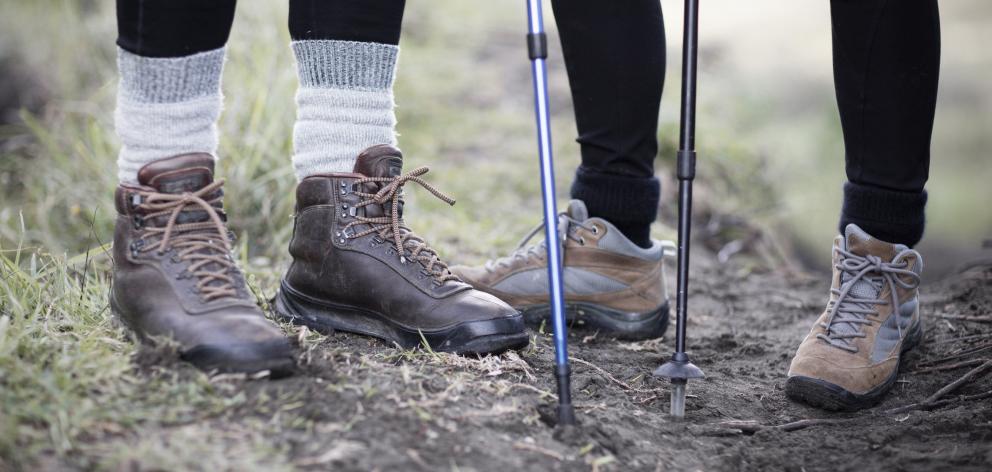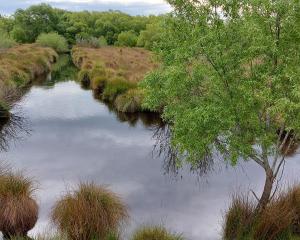
It was watching tonne bags of gravel being helicoptered on to the Paparoa Track New Zealand’s newest Great Walk - when the scale of our obsession with tramping was laid bare.
To build a new track from scratch was more than a labour of love. It took 40km of trail, four suspension bridges, two huts, $12 million. Kiwis take access to the outdoors seriously. The jewel in the crown of our 900-cabin network of tracks and trails is a collection of 10 Great Walks.
Recently the Department of Conservation (Doc) revealed that more than half the country say they have done at least one multi-day hike. For one in five of us, they’re an annual outing.
But if you’re in the other half of the camp and are keen on making a start post-lockdown, this could be the guide for you.
We’ll go through the gear, training and some backcountry hacks to make the most of New Zealand’s favourite hikes.

First steps: booking a great walkExpect the most popular Great Walks to fill up quickly.
If you are one of the lucky few to nab a space on the Milford Track, good for you.
But go with clear dates in mind and alternative trails, expecting that some might not be available. Be willing to explore a less popular route. There are 10 tracks throughout the country, all great.
When’s best to do a great walk?
Great Walk season runs from October to April.
Don’t book a hut off-season because the bunk rate is cheaper. They can become dangerous, even impassable, outside of these dates - particularly in the alpine Great Walks such as the Routeburn and the Tongariro Circuit, where some facilities are closed and tracks can be closed by extreme weather.
There are five walks which - with the right packing and preparation - are enjoyable all year round: Lake Waikaremoana, Abel Tasman, Heaphy, Paparoa and Rakiura.

Do I have to do the whole thing?
A Great Walk is not a box-ticking exercise. It’s supposed to be fun. Most walks (apart from the Milford) can be hiked in either direction. On some of the most scenic hikes, you could choose to do a short section. An overnight hike to the Routeburn Falls/Flats Hut or taking a water taxi to Awaroa on the Abel Tasman are both perfect taster tracks, especially for younger hikers. Children under 17 can book into Great Walk huts free of charge.
There are three routes to taking a Great Walk
The classic hut experience: This is the Great Walks arguably at their greatest. These huts are your home away from home for multi-day hikes. The bunks may be basic but there’s no greater inspiration than knowing there’s a roof over your head and a kitchen with views of the bush to keep you going.
Tent and tramp: This is the more hardcore option. Camping is also the cheapest, with the most flexibility. If your heart is set on doing a particular track, you can often find a camping space even if the huts are all booked out. This, of course, requires you to carry your tent and kit the whole way. Pack light.
Guided and private accommodation: Who says a trek has to be a trial?
There are a host of guided options for the Great Walks. These range from those wanting some assistance and company to full-blown pack relay.

On the Routeburn and Milford Tracks, you will find catered deluxe huts, belonging to Ultimate Hikes. On some of the less remote trails, you can find a choice of private, sometimes luxury options. On the Abel Tasman Track - New Zealand’s most popular Great Walk - you can treat yourself. If you really want to push the water taxi out, you can swap out a hut stay for a night and a warm shower in the Awaroa Lodge or Torrent Bay Lodge.
Wild cards
So walking isn’t for you? That doesn’t mean there isn’t a Great ‘‘Walk’’ for you. The Whanganui River Journey is one of the least busy routes and takes place in canoes.
Many hikers choose to mix up the sections of the Abel Tasman coast with sea kayaks.
Swapping hikes for bikes is also increasingly popular. The Heaphy Track allows cyclists.
Paparoa was the first track to allow all-year-round mountain biking.
How to prepare
Three to five days of hiking can seem a daunting prospect. However walks are broken into a cruisy 4-5 hours a day, at most.
A day walk of about 10km-12km is a great way to get a feel of the trail. Take your pack, snacks and the sort of gear you intend to walk in.

What gear do you need?
Boots
Beginning from the bottom: well-worn boots are key to comfort. New boots can be tough on the feet; however, if they’re showing wear and tear, it may be time to find a new pair. Having a pair give up on the track is a holiday-ruining nightmare.
A change of hiking socks will keep your feet dry, and stop sores developing. Bring enough.
Top tip
Bring a pair of trainers or jandals for exploring while at camp.
Layers
You’ll need plenty of these. From thin, breathable sun covers to thick fleece warmers, lightweight layers can help defend against the many and varied conditions of New Zealand's outdoors. Make sure one of these layers is waterproof.
Backpack
You’ll be lumping a lot of kit. The lighter you can make it the better. Check that straps are comfortable and secure when fully loaded. You might want to practise taking your pack for a short walk, loaded with 10kg to 15kg.
Top tip
Divide your kit and clothes with dry-bags or bin liners. This not only helps keep your bag in order, but can prevent leaks from outside (or inside) the bag, ruining your walk.
Sleeping bag
The green mattresses of the standard Doc bunks are surprisingly comfy. However, you’ll need a sleeping bag.
Water bottles
Hiking is thirsty work. You'll want to take at least two litres.
Top tip
Water at Doc huts requires boiling, which is an important chore. Do this the night before to avoid queues in the kitchen and lukewarm water on the trail.
Food
A Great Walk is carte blanche to eat what you want in terms of calories. The only constraint is having to carry in every morsel. There are no dairies in the Fiordland backcountry. Cooking facilities are limited to gas hobs in the Doc huts. Most have spare pots and pans, but it’s a good tip to bring a pot and camping cutlery. Leave unnecessary packaging at home. Dried pasta, rice, boil-in-the-bag meals are ideal, although I’ve seen entire cheeseboards, steak sandwiches and the odd bottle of wine produced from a rucksack before.
It may sound basic but I promise you: there’s no tastier meal than the one at the end of a 12km day.

Nice to have
Walking sticks - The click-clack of poles is a bit try-hard. However, they do help lighten the load and make covering terrain easier. Your knees will thank you.
Books, games, a travel fishing rod - People often fail to realise that a hiking holiday is just as much about what happens between walking. Enjoy the backcountry.
Earplugs - Sleep is precious. There will be snoring.
Be a tidy Kiwi - The unofficial motto of the Doc hut. Obviously this means taking your rubbish with you and minimising your own mess. But, if you're the first one in or last one out, a quick sweep of the floors can go a longway to keeping the hut in order.
• Check Covid-19 Alert Level restrictions and Ministry of Health advice before travel. covid19.govt.nz












